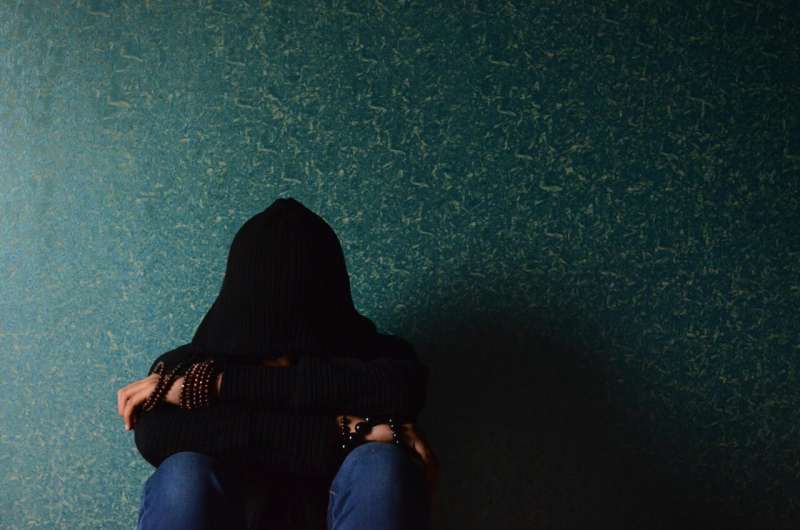
Vivid mental images of self-harm can put young people at an increased short-term risk of actually harming themselves, according to new research.
A study published in Suicide and Life-Threatening Behavior sheds new light on the factors influencing in-the-moment fluctuations in self-harm risk.
It is the first study of its kind to track the real-time occurrence of mental imagining of self-harm, alongside the urge to self-harm and actual self-harming behavior.
Self-harm refers to an individual deliberately damaging their own body to help cope with intense and unwanted emotions and psychological distress, but without suicidal intent.
Conducted in Australia, the study involved 43 young people aged 17 to 24 with a reported history of self-harm. They were asked to use their mobile phones to respond to brief surveys to indicate the nature of their thoughts and actions seven times a day—at varying intervals of between 30 minutes and 2.5 hours—for 14 days.
The results showed the occurrence of self-harm mental images tracked closely with fluctuations in the urge to self-harm.
Of more than 450 reports of imagining self-harm recorded through the surveys, more than 83% involved depictions of what happens during the act of self-harming, while almost 60% was perceived to have increased the person’s urge to harm themselves more.
Importantly, participant’s subjective feelings about the impact of these mental images were consistent with objective changes in self-harm risk across time. More frequent self-harm mental imagery predicted greater increases in urge and the likelihood of acting on that urge in the near future.
The study builds on research which has suggested mental imagery has the potential to serve as a novel intervention target for various alternative coping behaviors, including those at risk of self-injury.
Its authors believe their findings will help scientists and clinicians develop more effective interventions that can help young people who want to stop self-harming.
Dr. Julie Ji, Lecturer in Psychology at the University of Plymouth, led the study while working as a Forrest Postdoctoral Fellow and Raine Brightspark-Cockell Fellow at the University of Western Australia.
“Self-harm in young people is on the rise. In England, 1 in 4 girls and 1 in 10 boys aged 16 to 24 have engaged in self-harm, damaging their own body without the intention to end their lives. The primary reason is to help cope with intense and unwanted emotions. Self-harm behavior can become repetitive for some young people, and we need to know more about what’s influencing a person’s in-the-moment decision-making.
“Through this study, we found that when urge is high, an individual’s mind becomes preoccupied with imagining the actions, bodily sensations, and emotional benefits of self-harm. Given we know that imagining future events can motivate and guide our actions, this also suggests mental imagery may be harnessed to help young people develop alternative coping strategies,” says Julie Ji, lecturer in psychology.
More information:
Julie L. Ji et al, Picturing self?harm: Investigating flash?forward mental imagery as a proximal and modifiable driver of non?suicidal self?injury, Suicide and Life-Threatening Behavior (2024). DOI: 10.1111/sltb.13081
Citation:
Mental imagining of self-harm can increase urge, heighten risk of people harming themselves (2024, April 22)
mental-urge-heighten-people.html
.
. The content is provided for information purposes only.
